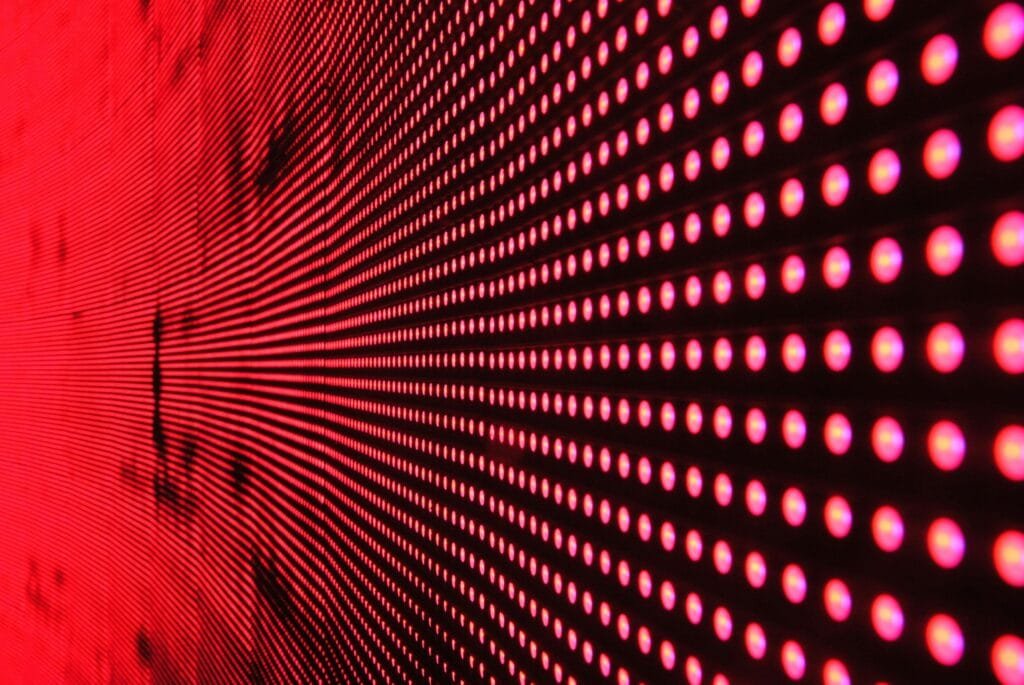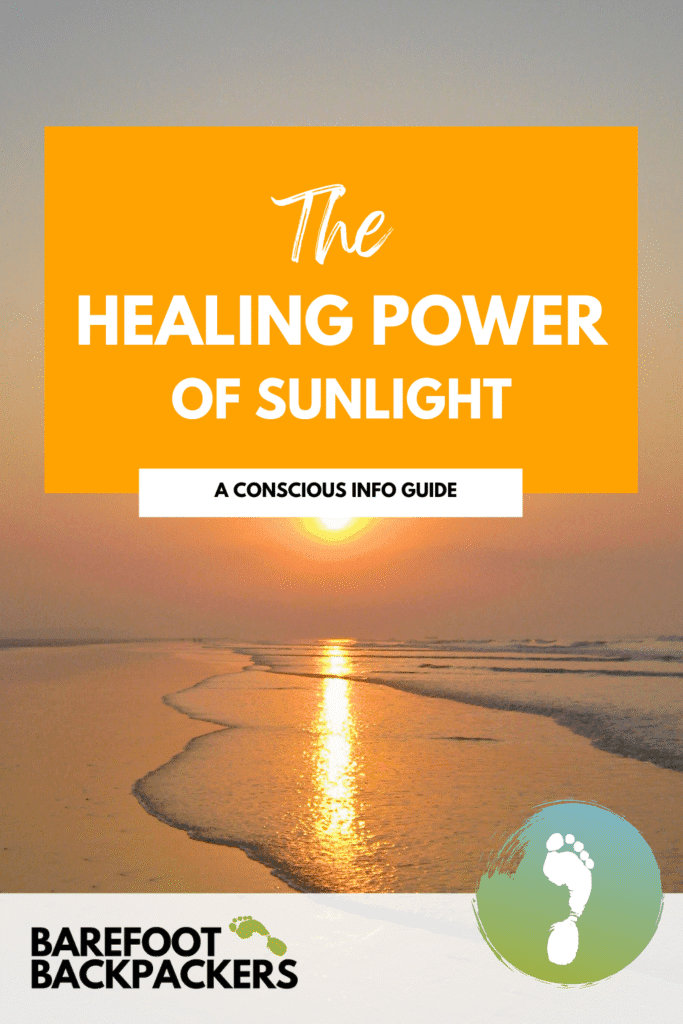This post may contain affiliate links which means we may receive a commission for purchases made through links. As an Amazon Associate we earn from qualifying purchases. Learn more on our Privacy Policy page.

The sun, the most abundant source of energy on Earth, is also one of nature’s most accessible healing modalities. More than warmth and light, it is a sacred element guiding internal rhythms, energising every living organism, and representing nature’s unending abundance.
Practised with awareness, daily sun exposure supports not only physical vitality but also mental clarity, emotional steadiness, and a sense of harmony with the natural world. Therefore, building a conscious relationship with sunlight is one of the most grounding rituals available.
History of Healing with Sunlight
First of all, let’s take a look at the history of looking to the sun as a means of healing and improving physical and mental well-being. The healing power of sunlight has been recognised for thousands of years. As far back as 1300 BC, the Egyptian pharaoh Akhenaten honoured the sun for its life-sustaining energy. In ancient India, the oldest health system, Ayurveda, which is based on an in-depth study of nature, recognised the subtle differences in daylight at different times of day and, more specifically, how they affected the human body through the lens of bio-energies known as the doshas. For example, it was understood that at sunrise, certain solar rays increase kapha (or earth) qualities of nature until around mid-morning. Then, as the sun rises to midday, solar heat increases pitta (or fire) energy. Finally, as the sun sets, the rays support the cold vata energy (air).
When we look centuries later, Hippocrates, often coined the father of medicine, prescribed heliotherapy, the therapeutic use of sunlight for both physical ailments and mental health. In more recent years, the mid-19th century, Florence Nightingale observed that patients recovered more quickly when exposed to direct sunlight, noting its vital role in hospital care. Around the same time, CJB Williams found that cod liver oil, rich in vitamin D, was effective in treating tuberculosis, a discovery that linked sunlight and diet to stronger immunity.
In 1903, Danish physician Niels Finsen received the Nobel Prize for demonstrating that concentrated sunlight or artificial light could successfully treat skin conditions caused by TB, as well as cure rickets. Across cultures and centuries, these moments in history reveal a shared wisdom: sunlight is not only a source of warmth and life but a powerful ally for healing and wellbeing in human health.
Sunlight as Biological Information
Sunlight is more than just daylight, it is a full-spectrum electromagnetic signal. Each part of the day offers unique wavelengths that deliver specific instructions to the body. From the red light of dawn to the ultraviolet rays of midday, the sun choreographs everything from sleep cycles to hormone production.
Each colour in the spectrum carries its properties, and throughout the day, these wavelengths shift in intensity and balance. When the body is exposed to these changing light cues, it synchronises with the Earth’s natural rhythm.

Red Light: Nature’s Therapy
Red and near-infrared light, most abundant at sunrise and sunset, penetrate deeply into the skin and tissues. This spectrum stimulates mitochondrial activity (the energy factories within cells), increases circulation, and helps reduce inflammation.
While red light therapy devices mimic this effect, the original and most powerful source remains the early morning and evening sun. These are moments of deep restoration and reflection with ideal times to ground, breathe, and reset the nervous system naturally.

Blue Light: Helpful by Day, Harmful by Night
Blue light is a natural part of the midday sun, helping to boost alertness, energy, and focus. It signals to the brain that it’s time to be awake and active.
The issue arises when blue light is isolated and consumed artificially, especially from screens, overhead LEDs, and digital devices with long after the sun has set. Artificial blue light disrupts melatonin production, delays sleep, and throws off the circadian rhythm. This can lead to poor recovery, heightened stress, and chronic fatigue.
Simple shifts can help restore balance: limit screen use after sunset, switch devices to night mode, use amber lighting indoors, and spend evenings watching the sky change colours. These practices gently guide the body back to its natural sleep-wake cycles.
Circadian Rhythm: The Inner Clock Depends on the Sun
The circadian rhythm is the body’s internal 24-hour clock, regulating everything from sleep and hunger to hormone release and body temperature. Sunlight, especially in the first hour after waking, plays a crucial role in setting this rhythm.
Morning light tells the brain it’s time to wake, raise cortisol naturally, and start producing serotonin. These signals also initiate the cascade that will lead to melatonin release later that night.
Without morning sunlight, this delicate timing is disrupted, and Insomnia, low energy, poor mood regulation, and difficulty focusing can occur if the body is out of balance. Even just 10-15 minutes of sunlight exposure after waking can reset the internal clock, enhance focus, and improve overall resilience.
Midday Light: The Sunshine Hormone
At midday, the sun reaches its peak. While many associate this time with tanning or hiding in the shade, it’s actually when ultraviolet B (UVB) rays are most available, which are critical for the production of vitamin D in the skin.
Vitamin D: The Solar Hormone
Often misclassified as a vitamin, vitamin D functions more like a hormone. It plays a vital role in immune function, mood regulation, bone density, and hormonal balance. Yet, modern lifestyles often marked by indoor living, constant sun avoidance, and sunscreen overuse have led to widespread deficiency.
Clothing, glass, and sunscreen block UVB rays. Just a few minutes of unfiltered midday sun on bare skin initiates powerful changes in mood, energy, and long-term wellness. Balance is key: avoid overexposure, but don’t miss the medicinal window that midday sun offers.

Evening Light: Infrared for Recovery and Rest
As the sun dips below the horizon, the atmosphere becomes saturated with longer wavelengths rich in infrared light. This light calms the nervous system, stimulates tissue repair, and supports deep cellular regeneration.
Traditions like Ayurvedic sunset gazing reflect this ancient wisdom. In the final moments of daylight, infrared light floods the eyes and body, helping to restore balance and potentially support long-term vision health.
Evening light also signals the pineal gland to begin converting serotonin into melatonin, the sleep hormone. Watching the sunset not only grounds you emotionally, but it also signals the body for rest.
Sunlight as Daily Ritual and Remembered Wisdom
To live in sync with sunlight is to return to a rhythm older than time. Whether camping beneath stars, walking coastal trails, or sipping tea by a sunlit window, aligning with its rhythm restores something deep within. Rising with the sun, grounding barefoot, and witnessing the changing colours of the sky aren’t just feel-good habits; they’re acts of natural alignment.
Even a few minutes at sunrise or sunset, ideally barefoot on natural earth, offer more than physical benefits. They quiet the mind, regulate hormones, and bring a profound sense of peace. Sunlight doesn’t demand effort or belief; it asks only for presence. Let it warm your skin. Let it set your rhythms. In those moments of light, the body realigns because the sun has always known how to bring us back to balance.
At Barefoot Backpackers, we’re passionate about helping you navigate the world with purpose. Our site is a hub for holistic health, conscious travel tips, and sustainable living advice. With every guide, we aim to help you create meaningful adventures while staying true to your values. Our content always comes from real experiences and knowledge that is truly aligned with us.
Enjoyed this guide? Save this post & tag us when you share.

